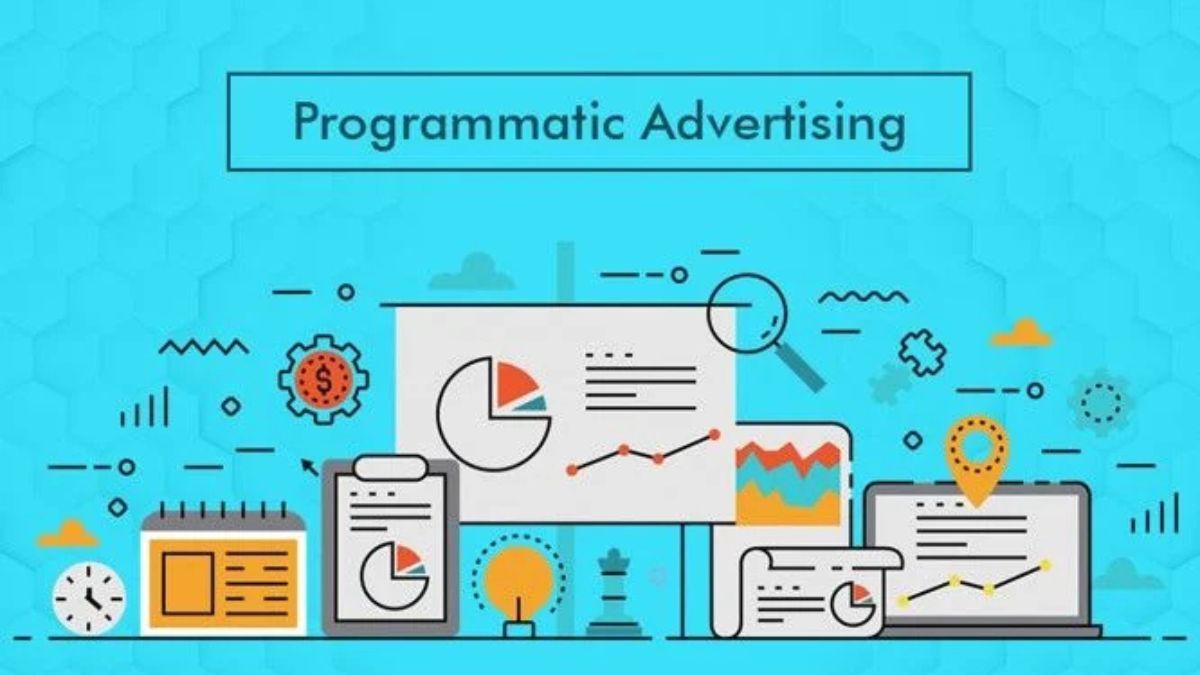TECHNOLOGY
What Are the Most Impactful Tech Trends to Watch in 2025?

Think about how different your daily tech use is now compared to just a few years ago. The pace of change keeps accelerating, and 2025 is looking like another important year for technology.
AI is becoming more integrated into everyday tools, transforming the way we work and communicate. Several key developments are emerging that are worth paying attention to. These changes could impact how we live and do business beyond just being interested in tech. Let’s look at the trends that matter beyond the hype.
The Biological Innovation Era
As we enter 2025, biological science innovations are transforming healthcare, farming, and environmental protection.
Advanced genetic modification techniques, particularly precision DNA editing, are becoming more widely adopted. These tools promise to treat inherited conditions, including muscle-wasting diseases, respiratory disorders, and blood abnormalities.
New targeted therapeutic approaches also aim to improve cancer care by minimizing harmful effects while boosting treatment success.
Industry analysis indicates the market for precision genetic modification technologies reached $3.58B in 2023. As per Grand View Research, it is projected to grow annually by 14.73% through 2030. This growth is driven by the rising prevalence of genetic disorders, scientific progress, policy support, and sector investments.
According to Forbes, beyond medicine, biological innovations are revolutionizing agriculture by creating crops with enhanced disease and climate resistance, reducing chemical pesticide dependence. Emerging technologies like cultured protein products are gaining acceptance as sustainable food alternatives that could help address global nutrition challenges.
Rise in Demand for Cybersecurity
The rapid expansion of digital connectivity has made cybersecurity more crucial than ever.
By late 2024, the global cybersecurity market reached $185.7 billion, with security services commanding the largest share at $97.3 billion. As per market projections by Statista, continued growth at 7.92% annually, potentially reaching $271.9 billion by 2029. Organizations typically invest about $52 per employee in cybersecurity measures, with the United States leading global spending at $81.4 billion.
Security experts anticipate more complex digital threats targeting essential systems, corporate networks, and personal data. This evolution demands comprehensive defensive strategies focusing on enhanced security infrastructure, smart defense systems, and trust-limited architecture. Organizations must modernize defense systems, deploy intelligent threat detection, and implement strict access controls.
On an individual level, maintaining strong authentication, encrypting sensitive information, and monitoring account activities have become essential practices. Regular security updates, effective password management, and ongoing awareness training complete a robust security posture.
Increased Reliance on CRM Software
The CRM software market is experiencing rapid growth. Projections indicate it will more than double, increasing from $101 billion in 2024 to nearly $263 billion by 2032. As per Fortune Business Insights, this 12.6% annual growth rate reflects how essential CRM systems have become for modern businesses.
It’s easy to see why companies are investing heavily in these tools. Modern CRM platforms do far more than just store contact information. They’re comprehensive systems that give businesses a 360-degree view of their customer relationships. By centralizing customer data and interactions, teams can provide faster, more personalized service across all channels.
The legal industry offers a perfect example of CRM’s transformative potential. As senior partners approach retirement, law firms face the critical challenge of preserving client relationships. Advanced CRM systems help tackle this by enabling firms to build cross-practice client teams and maintain detailed interaction histories. This means that even when key partners retire, the firm retains crucial client knowledge and can ensure smooth transitions.
Personal injury law firms, in particular, have turned to personal injury CRM solutions to optimize their operations. These specialized platforms help manage case workflows, track client communications, and monitor deadlines – essentially keeping everything organized in one place.
As per SimplyConvert, modern personal injury CRM systems offer real-time analytics and customizable dashboards. It gives firms unprecedented insight into their operations and case progress.
The growing sophistication of CRM technology is a key factor driving its adoption. Its proven ability to strengthen client relationships and improve operational efficiency further contributes to its appeal. As a result, businesses across industries are making CRM a cornerstone of their technology strategy heading into 2025 and beyond.
Edge Computing and 5G: The New Frontier of Digital Infrastructure
The convergence of edge computing and 5G technologies is driving significant market growth, with edge computing investments projected to rise 15% this year. CIO says that industry analysts anticipate this market reaching $350 billion by 2027. Private LTE/5G infrastructure revenue is expected to hit $5.2 billion in the same timeframe.
Modern edge devices now handle complex operations previously restricted to data centers. This evolution enables local AI/ML processing, enhanced data privacy, reduced data transfer needs, and improved security protocols. The combination of 5G networks with edge computing creates powerful advantages through minimal latency, accelerated decision-making, and enhanced real-time capabilities.
This technological convergence is transforming multiple sectors, including manufacturing automation, healthcare services, autonomous vehicle systems, and smart infrastructure. The emerging hybrid edge-cloud architecture leverages both traditional cloud computing and edge processing capabilities, enabling new applications while maintaining data security.
FAQs
-
How is AI transforming business in 2025?
A: Artificial intelligence is significantly transforming the business world, with organizations investing substantially in AI agents. Success in this transformation often depends on strategic leadership guidance. Industry analysts, including Gartner, identify autonomous AI systems as the defining technological advancement for 2025 and subsequent years.
-
What developments are expected in IoT by 2025?
A: The Internet of Things (IoT) energy sector is set to expand to $35 billion. This growth is largely driven by the widespread implementation of intelligent power grids and related IoT technologies. These advancements are essential for addressing increasing energy requirements while maintaining environmental sustainability and operational efficiency.
-
What are the emerging data management trends for 2025?
A: Memory-based database systems are becoming central to data operations, offering enhanced data set handling and transfer capabilities. These systems provide quick deployment options and scalability for enterprise needs. Additionally, data management is becoming more adaptable through streamlined processing approaches and compact solutions.
The technological shifts we’re witnessing aren’t just about faster processors or sleeker devices – they’re fundamentally reshaping how we interact with the world. As biological innovation merges with digital technology and edge computing converges with enhanced security measures, we are witnessing a transformation.
The question isn’t whether to adapt but how to leverage these changes to create a future that serves humanity’s best interests.
Will we use these tools to bridge divides and solve global challenges, or will we allow them to deepen existing inequalities? The answer lies not in the technology itself but in how we choose to shape and implement it in 2025 and beyond.

TECHNOLOGY
Crafting Success: The Dynamic World of Programmatic Display Advertising

Introduction to Programmatic Display Advertising
Programmatic display advertising marks a quantum leap in how brands communicate with audiences amid the digital age’s hustle and bustle. This automated approach to ad buying places a significant emphasis on efficiency and precision, enabling advertisers to refine how ads are purchased and delivered significantly. At their core, programmatic solutions simplify the buying, placement, and optimization of media inventory, allowing for more strategic, creative, and impactful campaigns.
The shift to programmatic display advertising emerged due to evolving consumer behavior and technological advancements. Manual ad-buying processes became archaic and inefficient, with audiences distributed across myriad digital platforms. Programmatic solutions address these concerns by automating processes that once required significant manual effort, offering advertisers a powerful tool to handle the complexities of today’s digital advertising landscape efficiently.
The Mechanics of Real-Time Bidding
Real-time bidding (RTB) is integral to the programmatic advertising framework. This process resembles a stock market for ad space, where bids for inventory happen in mere milliseconds. Through RTB, advertisers leverage audience data to make instantaneous decisions about which ads to bid for and at what price. This fosters an environment where relevance supersedes conventional broad strokes in advertising placement. As a result, marketing messages are delivered with unmatched timeliness and relevance, connecting with the right audience at the perfect moment. RTB is emerging as retail media’s next frontier, underscoring its growing importance in delivering targeted, high-impact campaigns.
The significance of real-time bidding cannot be overstated. By allowing advertisers to adjust bids dynamically based on real-world data, RTB ensures efficient ad spending and maximizes the potential for engagement. This swift flexibility gives brands a distinct advantage in capturing attention and driving conversions in an endlessly noisy online environment.
Benefits of Programmatic Display Advertising
Programmatic display advertising offers numerous advantages that are transforming the advertising landscape. It enables brands to extend their reach more effectively and efficiently. By using automated systems, marketers can streamline operations and reduce costs, ensuring a greater return on investment.
One of the standout benefits is the enhanced targeting capability. Advertisers can specify target audiences by considering demographics, online activities, and buying history. Such granularity allows tailored messaging that resonates more deeply with recipients, boosting engagement and conversion rates. Through programmatic advertising, brands can converse directly with consumers in ways that matter, making their marketing efforts more impactful.
Effective Strategies for Advertisers
Employing effective strategies within programmatic display advertising is crucial for maximizing impact. Understanding audience preferences is the first step in crafting compelling advertising. Leveraging data analytics allows advertisers to create targeted marketing messages. This data-driven foundation lets brands anticipate needs and deliver content that aligns with consumer interests and behaviors.
Innovation in creative approaches plays an equally important role. Captivating visuals combined with dynamic content keep audiences engaged. Advanced targeting, such as retargeting strategies, ensures the continuation of brand engagement, turning fleeting interactions into lasting relationships. Today’s digital landscape requires advertisers to keep content fresh and relevant, capturing attention in moments that matter.
Potential Challenges and Solutions
Despite its myriad benefits, programmatic advertising is not without its challenges. Transparency within the ad delivery process remains a concern for many advertisers. Adopting systems that enhance visibility into placement and pricing can alleviate this issue and bolster trust and confidence in programmatic campaigns.
Fraud is another concern that plagues digital advertising. Ads not reaching their intended audience due to fake impressions or fraudulent activity can be detrimental. Advertisers rely on sophisticated fraud detection technologies and choose platforms with robust anti-fraud measures to combat this. Furthermore, vigilance around compliance and privacy laws is essential as these regulations continue to evolve, impacting how brands engage with consumers online.
The Future of Programmatic Advertising
Looking ahead, programmatic advertising promises continued growth and innovation. Integrating artificial intelligence (AI) and machine learning will refine ad targeting and personalization. By learning from past interactions, machines can deliver hyper-relevant content that meets consumer expectations.
The marketing landscape is poised for transformation, driven by new technologies and more sophisticated methodologies. Industry leaders suggest that as programmatic tactics mature, advertisers will embrace opportunities to create even more personalized advertising experiences, continuously refining their techniques for maximum effectiveness. Articles exploring programmatic advertising highlight algorithms’ ongoing importance in shaping this dynamic industry’s direction.
Key Considerations for Success
Finding the proper equilibrium between automation and human supervision is essential for ongoing success in programmatic display advertising. Even though automated systems manage the bulk of the workload, strategic contributions from marketing teams guarantee alignment with broader business goals. It is essential to select the appropriate technology partners and platforms as they directly influence campaign success and brand image.
Monitoring performance metrics and integrating feedback loops are imperative to optimize results. Every campaign provides insights to enhance the next, allowing brands to fine-tune strategies to align with changing market dynamics and consumer preferences. Embracing an iterative approach is key to thriving in public-facing digital spaces.
Conclusion: Harnessing the Power of Programmatic Advertising
In sum, programmatic display advertising represents a revolutionary shift in brand-to-consumer communication. By harnessing the power of automation and data-driven strategies, advertisers can wield technology with precision and purpose. Continuous adaptation to the evolving advertising landscape will ensure that brands remain connected with their audiences in meaningful ways. As highlighted in Forbes, staying on top of emerging trends is imperative. With programmatic advertising as a mainstay, the future of digital marketing shines brightly, offering endless possibilities for innovation and success.
TECHNOLOGY
Skypessä: Innovative Communication Platform

Effective communication has always been a pillar of success, whether in business, education, or personal connections. With the digital age in full swing, innovative platforms continue to reshape how we connect, collaborate, and communicate. Enter Skypessä, the next-generation communication tool that’s designed to meet the evolving needs of modern users.
Whether you’re a professional seeking seamless business communication, a student collaborating on group projects, or simply someone looking to stay connected with loved ones, Skypessä promises to redefine your experience.
This blog dives into Skypessä’s innovative features, how it stands out in the crowded digital communication space, and why it’s the platform you need to enhance your connections.
What is Skypessä?
At its core, Skypessä is a cutting-edge communication platform offering a comprehensive suite of tools tailored to meet the needs of a diverse user base. Combining state-of-the-art technology with a user-friendly interface, Skypessä bridges gaps in communication by allowing its users to interact seamlessly across various channels.
With an emphasis on interoperability and innovative features, Skypessä is more than just a tool for connecting people; it’s a platform built to enrich interactions, foster collaboration, and empower its users.
Standout Features of Skypessä
Skypessä leverages modern technology to provide standout features, making it a preferred choice for individuals and businesses alike. Here’s a look at its key functionalities:
- Unified Communication Channels
Chat, voice calls, video meetings, and collaboration tools are all housed under one roof. Skypessä eliminates the need to switch between multiple apps, making workflows smoother and more efficient.
- Crystal Clear Video and Voice
Skypessä uses state-of-the-art audio and video technologies to deliver unmatched call clarity. Whether it’s a one-on-one video chat or a large webinar, you can trust Skypessä to keep the session crisp and lag-free.
- AI-Driven Transcription and Translation
Language is no longer a barrier with Skypessä’s real-time transcription and translation features. Participants from around the world can communicate effortlessly, picking up conversations in their native languages.
- Smart Scheduling with Calendar Integration
Forget the headache of scheduling nightmares. Skypessä integrates with popular calendars like Google and Outlook to streamline appointment setting and meeting reminders.
- Security You Can Trust
Built with enterprise-grade security, Skypessä ensures that your conversations, data, and meetings remain safe. It employs end-to-end encryption for private communication and complies with stringent global data protection standards.
- Customizable User Experience
From themes and layouts to workflows and integrations, Skypessä offers a high level of customization, allowing users to tailor the platform to suit their specific needs and preferences.
Why Skypessä Stands Out in the Crowd
The era of digital communication is filled with options like Zoom, Microsoft Teams, and Slack. However, Skypessä sets itself apart in notable ways:
1. Purpose-Driven Innovation
Unlike platforms that tack on features without coherence, Skypessä builds every functionality with purpose. Its tools are designed to answer real challenges faced by modern users, from language barriers to collaboration inefficiencies.
2. Accessibility for All
Skypessä prioritizes accessibility, ensuring its platform is intuitive for users of all skill levels. Whether you’re a tech-savvy professional or someone simply looking to make a quick call, Skypessä’s intuitive design accommodates all.
3. Adaptable for Businesses and Individuals
The platform transitions seamlessly between personal and professional use cases. Grow your small business with team collaboration tools, or catch up with family using group video calls. Skypessä caters to all needs.
4. Community-Driven Upgrades
Skypessä’s thrives on feedback. Regular updates and improvements are based on user demands, ensuring that the platform evolves consistently to meet user expectations.
How to Get Started with Skypessä
Joining Skypessä’s is quick and easy. Here’s how you can set up and start reaping the benefits of this innovative platform:
- Sign Up for Free
Visit the Skypessä’s website and create your account in minutes. The intuitive onboarding process ensures no technical barriers.
- Download the App
Skypessä’s is available across multiple platforms, including desktop (Windows, macOS) and mobile (iOS & Android). For businesses, it also offers browser-based solutions for quick access.
- Explore the Features
Once you’re in, take a tour of its key features and tools. Skypessä’s offers tutorials to walk you through features like smart scheduling, transcription, and group setups.
- Upgrade for More Features
While Skypessä’s free version is robust, consider upgrading to its premium plans for advanced features like larger meeting capacities, custom branding, and premium support.
Building a Community Through Skypessä
Skypessä’s isn’t just a communication tool; it’s a platform that believes in fostering connections and community. With features designed to bring people closer, it sets the stage for deeper collaboration and meaningful interactions.
The platform also offers a thriving user community, where you can engage, share ideas, and learn how others are using Skypessä’s in creative ways.
Why Skypessä is the Future of Communication
As businesses and individuals look for smarter, seamless ways to connect, platforms like Skypessä will lead the charge. By combining innovation with accessibility and bridging communication gaps, Skypessä stands as a true game-changer in the realm of digital communication.
Whether you’re running a dynamic team project, conducting global meetings, or just trying to stay in touch, Skypessä’s offers a reliable, forward-thinking solution.
Explore Skypessä Today
Want to see how Skypessä’s can transform your communications? Don’t wait. Sign up today for free and explore the platform that promises to revolutionize the way we interact.
TECHNOLOGY
VF1H-1 50MHz: Revolutionizing Amateur Radio Communication

Prepare to take your amateur radio skills to the next level with the VF1H-1 50MHz! This state-of-the-art apparatus is more than simply an accessory; it is a revolutionary piece of gear that will transform the way you interact with other operators. Envision communications with a stunning frequency range and pristine clarity, ushering in a new era of inquiry and conversation. Everyone in the amateur world may benefit from this technological advancement, whether they are seasoned pros or just starting out.
Let’s dive into what makes the VF1H-1 stand out in a crowded market and why it’s quickly becoming a favorite among amateurs everywhere.
What is VF1H-1 50 MHz?
One cutting-edge piece of amateur radio gear that has been developed to improve communication possibilities is the VF1H-1 50MHz. Its special frequency range, which runs on the 50 MHz band, opens up a universe of possibilities for its customers.
Effortless operation and cutting-edge technology come together in one gadget. Both amateurs and experts will appreciate how easy it is to carry and use thanks to its small size.
The VF1H-1 stands out due to its strong output and the variety of modulation modes it offers. That means your signals will be more distinct and your connections will be more stable as you communicate.
Your amateur radio skills will be taken to the next level with this equipment, whether you’re chatting with friends or competing in contests. The ability to connect successfully in a wide range of settings is more important than merely transmitting.
What sets the VF1H-1 apart from other amateur radio equipment?
When compared to other amateur radio gear, the VF1H-1 50MHz stands out thanks to its wide frequency range. Operators are able to investigate multiple communication channels using the VF1H-1, as it covers a large spectrum, unlike many radios that specialize in specific bands.
One important distinction is its power output. Thanks to its sturdy construction, you can crank up the power without compromising sound quality or efficiency. With this, fans will be able to receive signals with more clarity and a wider range.
What really sets this concept apart is its adaptability. Its versatility in supporting numerous forms of modulation allows it to easily adapt to a wide range of user preferences and situations. It seamlessly adjusts to your preferred frequency, be it SSB or FM.
Its attractiveness is further enhanced by its user-friendly features. The user-friendly design makes it suitable for operators of all experience levels, from complete novices to seasoned pros.
The Benefits of using the VF1H-1 for Amateur Radio Communication
Superior clarity is provided by the VF1H-1 50MHz, allowing for crystal-clear transmission across long distances. Ham operators rely on good signals for their exchanges; therefore, this dependability is vital for them.
Its user-friendly modulation types make switching modes a breeze. The VF1H-1 seamlessly adjusts to your preferences, be it FM, SSB, or CW.
It improves transmission strength with its remarkable power output. Improved signal penetration via different settings and a greater reach are the results.
The convenience of portability is yet another major perk. In the event of an emergency or during field operations, its small size and light weight make it easy to transport.
Both inexperienced and seasoned operators will find the controls to be intuitive and easy to use. Confusion at crucial moments of communication is eliminated by the straightforward UI.
Expert Reviews and Testimonials of the VF1H-1
Amateur radio amateurs and professionals have both taken notice of the VF1H-1 50MHz. When it comes to communication, many people say it’s very clear and dependable.
With a direct line to the globe,” one veteran operator said. Its audio is second to none. Here we can see how the gadget improves the user experience across different bands.
Its adaptability to various operating situations was emphasized by another reviewer, who also praised its diverse modulation kinds. People love this feature since it can be used for both regular conversations and emergency messages.
Also, reviews on its power output capabilities are pouring in. Proof of the VF1H-1’s robustness is the strong performance recorded by operators, even in demanding conditions.
Members of the community clearly have faith in this gear for all of their networking requirements, as the feedback keeps rolling in. People that use the VF1H-1 on a regular basis tend to be more and more enthusiastic about it.
How to Get Started with the VF1H-1 50MHz
The VF1H-1 50MHz is a thrilling instrument to learn how to use. Make sure you can legally use amateur radio frequencies before you do anything else. In order to ensure compliance and safety, this step is crucial.
The next step is to take your VF1H-1 out of its packaging and learn how to use it. You can connect the antennas and power sources according to the instructions in the user manual.
After assembly is complete, select a frequency range within the 50 MHz band that corresponds to your communication requirements. Determine which of the device’s numerous modulation kinds is most appropriate by playing around with them.
If you need help or advice from more seasoned users, you may always listen in on amateur radio groups or join an internet forum. When it comes to getting the most out of your machinery, they can give you some great advice.
Perfect comes with practice! Discover everything that this flexible transceiver can do by starting to make connections and playing around with the settings.
Application and Usage Scenarios for the VF1H-1
The VF1H-1 50MHz is perfect for a wide range of amateur radio uses due to its adaptability.
In the event of an emergency, operators can readily participate in local communications. Transmissions are crystal clear in situations where every second matters because of its dependable frequency range and power output.
The VF1H-1 adds fun, portable operation to the hobbyist’s toolbox. The small size and lightweight construction make it ideal for usage in out-of-the-way places, whether you’re camping or trekking.
Its sophisticated features are great for contesting fans. Participants are able to engage with others in a variety of settings, thanks to the numerous modulation kinds, which improves the competitive experience.
Another important factor is the dissemination of information. The VF1H-1 is a popular choice for clubs’ training sessions and seminars that teach novices amateur radio technology.
By utilizing this equipment in the classroom, educators may engage students in hands-on learning activities pertaining to radio transmission procedures, which piques their interest in STEM subjects and promotes scientific and communication concepts.
The Future of Amateur Radio
Numerous exciting opportunities are ahead for amateur radio in the years to come. New and improved means of communication are always on the horizon, thanks to technological progress.
Digital mode and software-defined radio advancements should provide operators with more flexible and clear signals. The VF1H-1 50MHz is a game-changer because of its many useful features.
Artificial intelligence (AI) integration may also provide ham operators with new capabilities. Picture analytics that evaluate band conditions in real-time and assist in optimizing communications accordingly.
Involvement of the community will also be vital. The future of amateur radio is being shaped by the new ideas and energy that more and more young people are bringing to the hobby.
Looking ahead, innovative uses in remote operations and emergency response might be possible if operators throughout the world work together. Being a member of this pastime at this moment is thrilling since the terrain is always changing.
Conclusion
If you’re an amateur radio operator, the VF1H-1 50MHz is more than simply gear; it’s a communication revolution in a box. It improves the way enthusiasts communicate with its top-notch features.
Envision being able to effortlessly experiment with different forms of modulation or discover new frequencies. Clear and dependable long-distance talks are now within reach, thanks to the adaptability and power output.
-

 BLOG1 year ago
BLOG1 year agoATFBooru: A Hub for Animated Art and Community
-

 CONSTRUCTION1 year ago
CONSTRUCTION1 year agoBuilding a Home Gym in Your Basement (7 Key Renovation Tips)
-

 BLOG1 year ago
BLOG1 year agoFictionmania: A Deep Dive into the World of Transformative Stories
-

 GAMES1 year ago
GAMES1 year agoSnow Rider 3D: Unblocked Tips and Tricks for Gamers
-

 BLOG12 months ago
BLOG12 months agoGIFHQ: A Comprehensive Guide
-

 BLOG1 year ago
BLOG1 year agoVincent herbert new wife: A Detailed Overview
-

 LIFESTYLE12 months ago
LIFESTYLE12 months agoVersatile Living: Stylish Indoor Outdoor Rugs with Eco-Friendly Appeal
-

 BUSINESS1 year ago
BUSINESS1 year agoInvestiit.com Tips: A Comprehensive Guide for Smart Investing